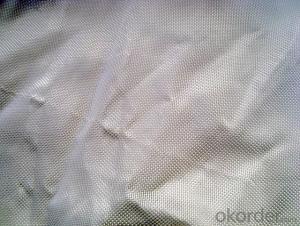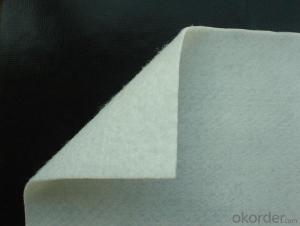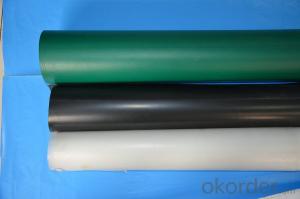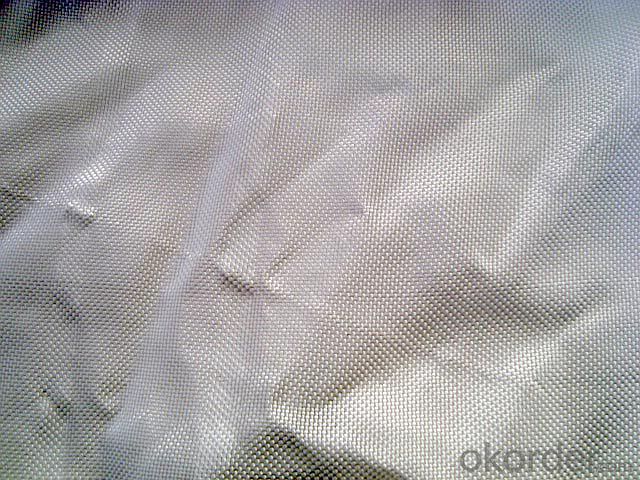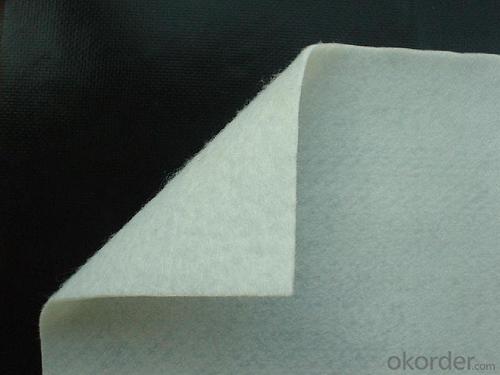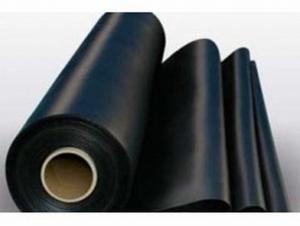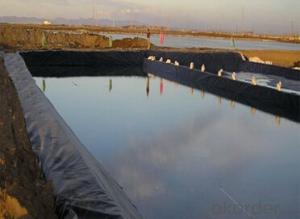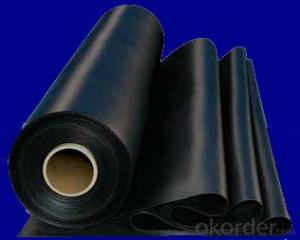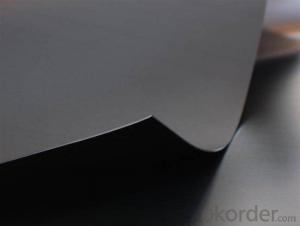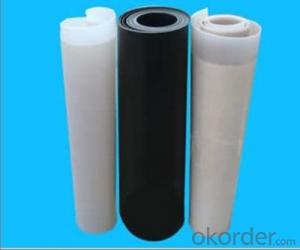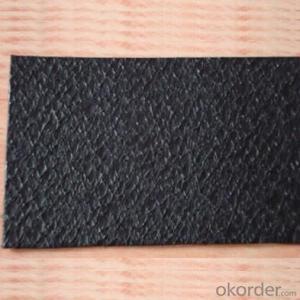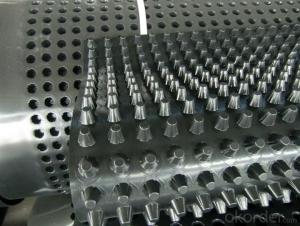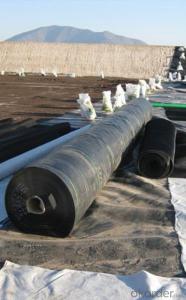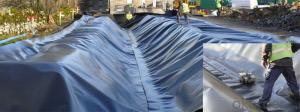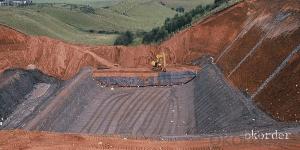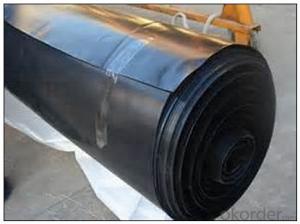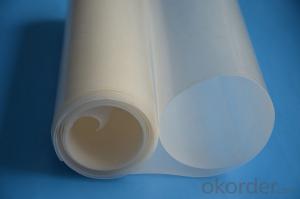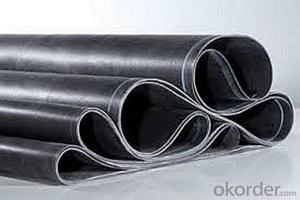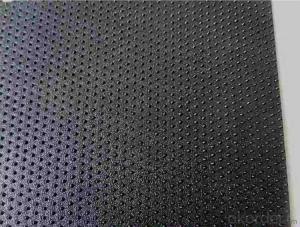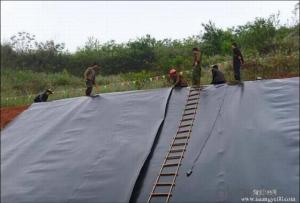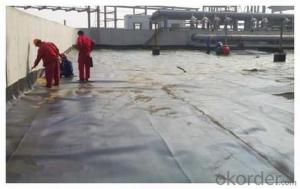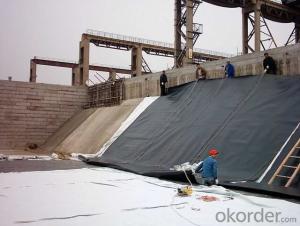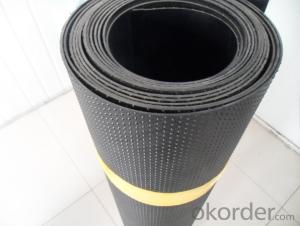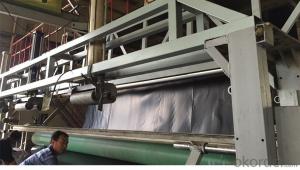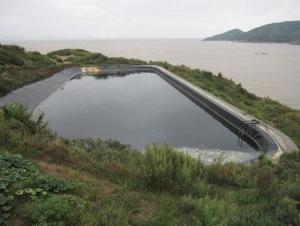Geomembrana Pead Waterproof Membrane Roll for Potable Water China
- Loading Port:
- China main port
- Payment Terms:
- TT OR LC
- Min Order Qty:
- 1000 m²
- Supply Capability:
- 1000000 m²/month
OKorder Service Pledge
OKorder Financial Service
You Might Also Like
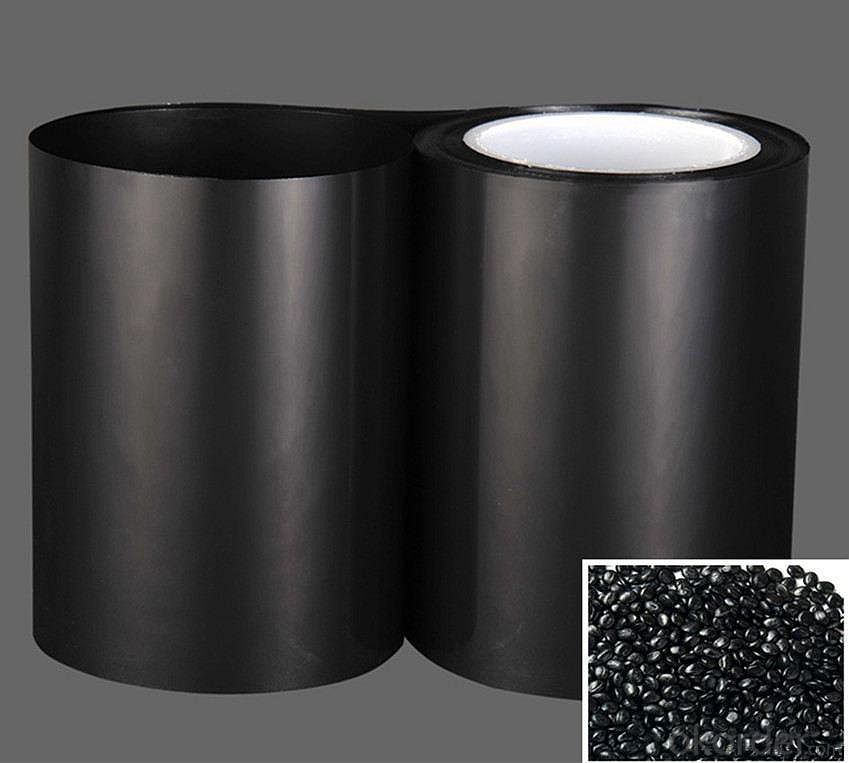
Product Introduction
Thickness:
1mm-3mm
Length:
50-200m as customers' request
Width:
4m~9m
Standard:
ISO, CE
Geomembrane is used to create an antifiltration screens for construction of geotechnical facilities in order to monitor and restrict movement of the liquid, to create waterproofing layers, etc.
Applicable to river dams, tunnels, drainage bank seepage, metallurgy and chemical industry pollution prevention, construction, transportation, environmental protection works.
Our Service
1.On a regular basis or as per your request,we entrust national testing agencies to conduct quality inspections
2. Strictly in accordance with the ISO9001-2008 international quality system standard,we monitor and manage the whole process throughout production,quality testing,and measurement to ensure product quality
3. For quality-related construction delay or substandard construction(except for damage or losses due to customer’s responsibility or irresistible natural disasters),we have refunding,replacement,and repair services.We will respond to customers’ feedbacks on quality issues within 24 hours.
FAQ:
Q: What kind of payments does jenor support?
A: T/T, L/C, Cash are accepted.
Q: Do you charge for the samples?
A: Accordeing to our company policy, the samples are free, we only charge the freight fee. And we will return the freight fee during the next order.
Q: Can you produce according to customers' design?
A: Sure, we are professional manufacturer, OEM and ODM are both welcome.
Q: Do you have other products?
A: Yes, please check the pictures:
- Q: can geomembrane reach A-class seepage-proof?
- the seepage-proof effect of project composite geo-membrane is mainly depends on the interlayer, the norms of seepage-proof geomembrane is 100-1500g/square meter, in order to guarantee the good seepage-proof effect, the thickness of geomembrane should be less than 500g/ square meter, outer geotextile should be less than 300g, too thin geotextile will reduce the sand stone resisting effect, increasing geomembrane's thickness and prevent sand stone corrosion will influence the seepage-proof effect of geomembrane, composite geo-membrane's norms is less than 800g/square meter, which can reach the seepage-proof standard.
- Q: What is the diatomite craft?
- Usually diatomite beneficiation mineral process is: Raw ore----first grinding and drying?---- second grinding and drying ---- pre sorting ---- hydrocyclones separation ---- powder products. Send to ring kiln for calcination if it needs to be further processed (with fluxor without flux) - grinding ore cooling - classification separation- filler or filter aid products. When processing, you must protect structure and unique shape of diatom skeleton. Choose the suitable crushing grinding equipment and crafts to protect complete structure of diatom and avoid secondary crushing. The ore grinder commonly used is pneumatic cracker.
- Q: Are geomembranes resistant to microbial degradation?
- Yes, geomembranes are generally resistant to microbial degradation. They are designed to provide a barrier against moisture, chemicals, and other environmental factors, which includes protection against microbial growth and degradation. However, the resistance may vary depending on the specific material used for the geomembrane and the conditions in which it is installed.
- Q: What are the differences between seepage-proof geomembrane and impermeable geomembrane?
- Just different names, products are the same.
- Q: How do geomembranes contribute to the preservation of archaeological sites?
- Geomembranes contribute to the preservation of archaeological sites by acting as a protective barrier against moisture, contaminants, and erosion. They are used to cover and line excavation areas, preventing the infiltration of water that can damage artifacts and structures. Geomembranes also help to stabilize the soil and prevent erosion, ensuring the structural integrity of the site. Additionally, they can be used to create controlled environments for the storage and preservation of delicate artifacts, allowing for long-term conservation.
- Q: How to stick the film on the bathroom window?
- The first step: You should measure the size of the glass.The size of the film should match that of the window, in case of wasting the film. Next if you want the film to be perfectly stuck, then you must spray some water to reduce the dust befor sticking the film, creating a dustfree environment for the film. The second step: Before finhishing washing the glass, you should put a lint free towel under the window to be washed to prevent water from flowing to the outside, thus soaking walls. Cleaning the glass is a important step and it relates to the effect of the film. The third step: When sticking the film, you should spray some water on the both side of the film to remove attachments on the film attched by the static electricity. Then, you can tear off the plastci film on the glass film, spary water on it and stick it on the glass. After that, you can squeeze the the water out and cut needless edges. The fourth step: The final step is to check whether the film has been stuck well. You can check whether edges are firmly attached and whether there are bubbles and wrinkles. Only when it is certain that there is no problem with the film the process of sticking film has been complished.
- Q: How are geomembranes tested for chemical resistance?
- Geomembranes are tested for chemical resistance through various laboratory tests. These tests involve exposing the geomembrane to different chemicals or solutions and evaluating its performance against chemical degradation. The geomembrane is typically subjected to long-term exposure tests, accelerated aging tests, and specific chemical immersion tests to assess its resistance to different chemicals. These tests help determine the suitability of the geomembrane for specific applications where it will be exposed to different chemical environments.
- Q: What is the lacquer membrane?
- if It is the painting membrane: it Generally refers to paint and latex paint. It can be understood as the thickness of the outer layer of paint. function: Beautiful, protect wooden furniture.
- Q: What is the use of the floor decoration film?
- The decorative film is a kind of packaging film. The whole process of finish includes many steps. The lack of the product protection in foregoing steps will bring unnecessary troubles and losses to subsequent steps steps and final using. So packaging film is required. The entray of all kinds of finishing materials and the clear-out of a variety of construction waste will pass through the entrance doors. During the removal of these items, the possibility of occurance of collision and friction will greatly increase. So the first place needed good product protection is our entrance doors.
- Q: How do geomembranes provide water retention in rooftop gardens?
- Geomembranes provide water retention in rooftop gardens by acting as a barrier that prevents water from escaping through the roof structure. These waterproof membranes are installed beneath the garden soil, effectively sealing off the rooftop and creating a closed system. By preventing water from seeping out, geomembranes help to retain moisture within the garden, ensuring that plants have a constant supply of water even during dry periods.
Send your message to us
Geomembrana Pead Waterproof Membrane Roll for Potable Water China
- Loading Port:
- China main port
- Payment Terms:
- TT OR LC
- Min Order Qty:
- 1000 m²
- Supply Capability:
- 1000000 m²/month
OKorder Service Pledge
OKorder Financial Service
Similar products
Hot products
Hot Searches
Related keywords
